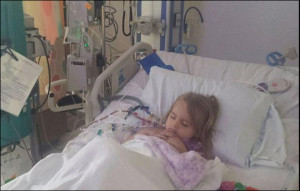The first step in solving any problem is to recognize that a problem exists.
 BS.
BS.
From rehab to the National Rifle Association, the phrase is thrown around like candy at Halloween, yet it doesn’t change or even influence behavior: those steps are harder.
The food safety world is inundated with reports recognizing the problem, but little changes.
A new report by the American Association for Justice (formerly known as Association of Trial Lawyers of America) concludes that the food industry’s drive for profits over safety has fueled a series of illness outbreaks and that the civil justice system remains consumers’ last and best line of defense.
“American consumers expect and deserve safe food. Yet, time and again, food producers have cut corners on food safety knowing full well that tainted products cause serious illness or even death. Cutting corners puts profits over people and that’s unforgivable when it comes to our food supply. Parents should never have to be worry about the safety of the peanut butter or ice cream they feed their children,” said Larry Tawwater, President of AAJ. “Because regulators are underfunded and understaffed, it is the civil justice system that provides the accountability necessary to safeguard our food supply.”
Every year, 48 million people fall sick, 128,000 are hospitalized, and at least 3,000 die from foodborne illness, costing the nation approximately $77 billion. Recalls in 2015 have surged compared to 2014 rates. In one of the most recent high-profile outbreaks, three people died after consuming Blue Bell ice cream contaminated with listeria. The company reportedly knew as early as 2013 that it had listeria in one of its plants. The outbreak is the most recent of the “ten worst outbreaks” chronicled in the new report.
 “If your food supply begins with corporate run factory farms, it begins in a system that prioritizes corporate profits over public health,” Jessica Culpepper, food safety & health attorney for Public Justice, said on today’s call.
“If your food supply begins with corporate run factory farms, it begins in a system that prioritizes corporate profits over public health,” Jessica Culpepper, food safety & health attorney for Public Justice, said on today’s call.
Are not small growers charging ridiculous amounts for boutique food with dubious health claims also profit-driven?
AAJ Researcher David Ratcliff said what’s so surprising is how often outbreaks of foodborne illnesses occur, adding, “We’re focused on so many other things when it comes to food – gluten, calories and GMOs (genetically modified organisms),” he said. “There’s a sense it won’t happen to us.”
 A report, issued by Consumer Reports with the Pew Charitable Trusts, said that between 2003 and 2012, 1,144 people grew sick from beef contaminated with E. coli O157; 316 people were hospitalized and five people died.
A report, issued by Consumer Reports with the Pew Charitable Trusts, said that between 2003 and 2012, 1,144 people grew sick from beef contaminated with E. coli O157; 316 people were hospitalized and five people died.







